Flange Types - old 90mm, new 90mm, and 100mm
I made this page to show the types of 020 flanges, and
explain which swap around.
As far as I am aware, there are 3 kinds of 020 5-speed flanges. I call them
old style 90mm, new style 90mm, and 100mm.
Trans before 1983 used the old 90mm, from 1983/4 they went to the new style
90mm flange, and in the MK2 years they introduced the 100mm flange, which is
just like the 90mm flange, only 10mm larger around and a bit taller.
If you have new 90mm flanges, you'll see a green seal
sleeve behind one or both of the flanges. If you have new 90mm flanges, you
can swap to 100mm flanges fairly easily, see my
Flange Swap Page.
Same with having 100mm flanges, you can swap in new 90mm flanges fairly
easily.
If you have a pre-1983 MK1 box with the old style flanges, you might want or
need to run 100mm axles or inner CV's... this can be done, but the trans
needs converted with a couple new flange seal kits, a couple green sleeves,
and a couple 100mm flanges. You wouldn't have any preload in the trans like
the 1984+ boxes, and you couldn't use the Peloquin 40% or 80% shim kits, but
it would fit a 100mm inner CV joint.
You can make an old trans have the preload a newer '84+ box has, but it
requires a lot more work (the trans needs opened and rebuilt, basically).
You could then use the Peloquin shim kits with the trans.
Here is a pic showing the backs of each... notice the new 90mm and 100mm are basically the same design, while the old 90mm is a little different...
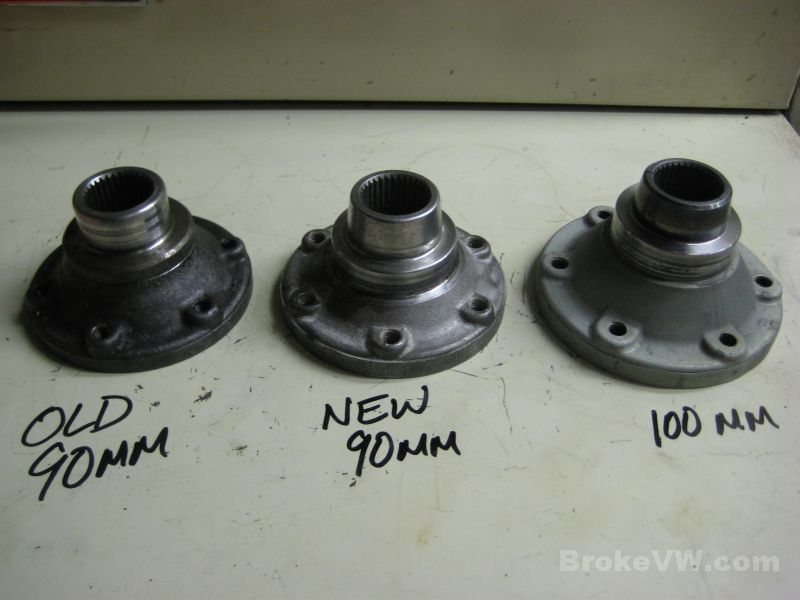
This shows the differences better, you can see the old style flange will have only one "shiny" part, the new style has two shiny parts...
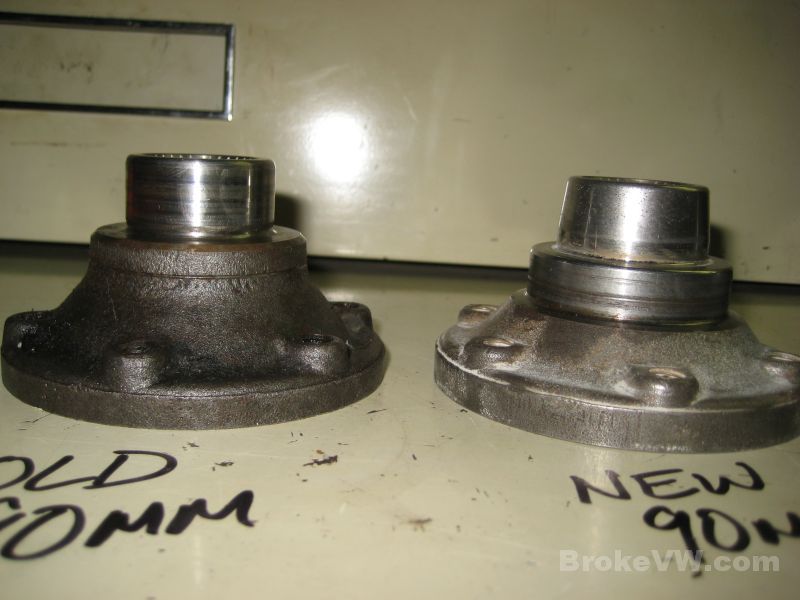
From the front, the old and new 90mm look the same, the 100mm looks, well, 10mm larger around...
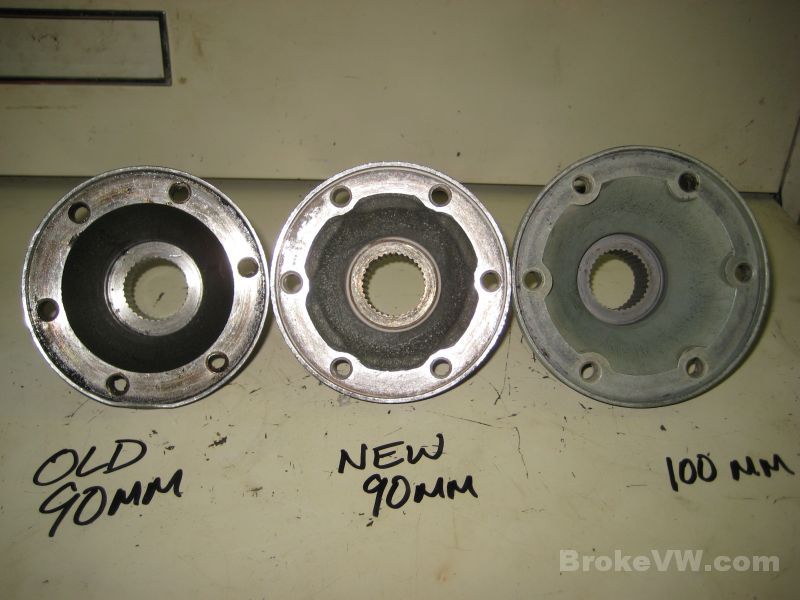
This pic shows there is a slightly deeper "dish" to the 100mm flange over either 90mm flange, and this is why running an 80% shim kit in a 90mm flange can lead to the center cap bolt backing out, the dish is more shallow and the axle shaft can come into contact with the head of the bolt.
Also shown are the seals for the flanges, the old "fat" seal on the left, then the new seal on the right, which fits both new style flanges...
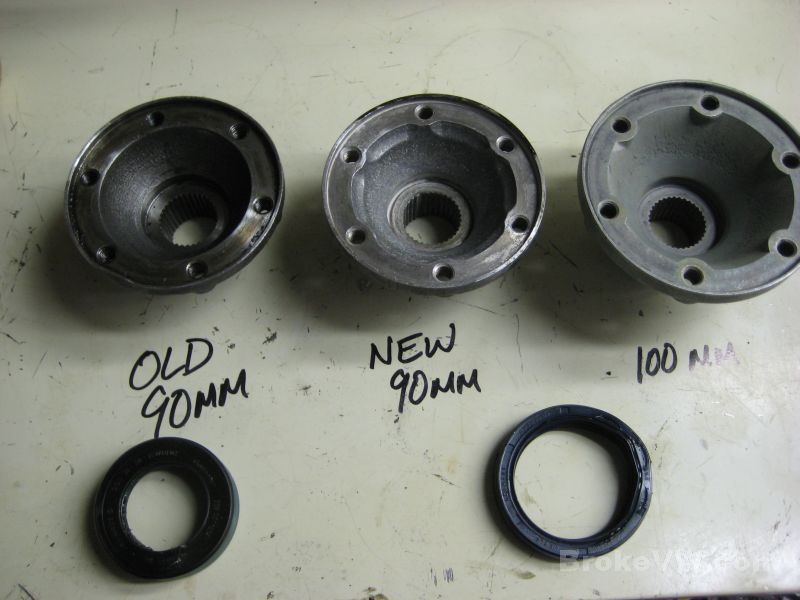
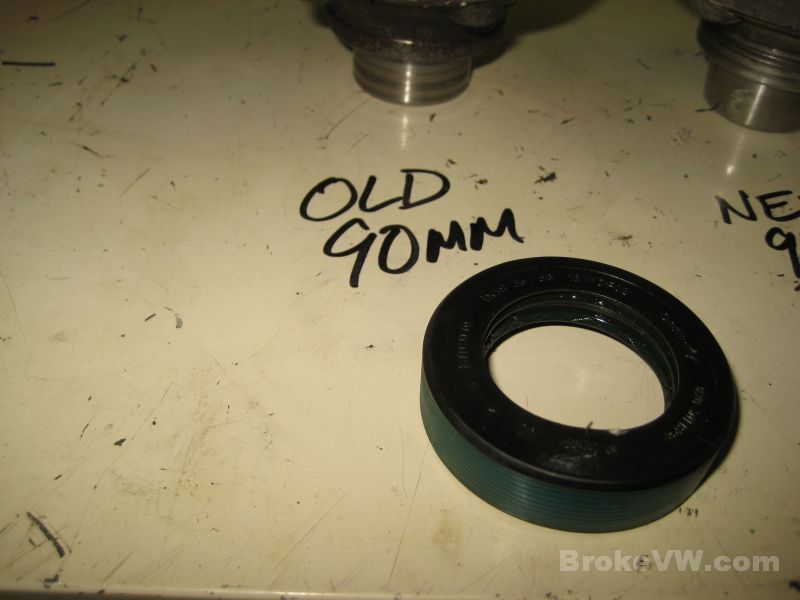
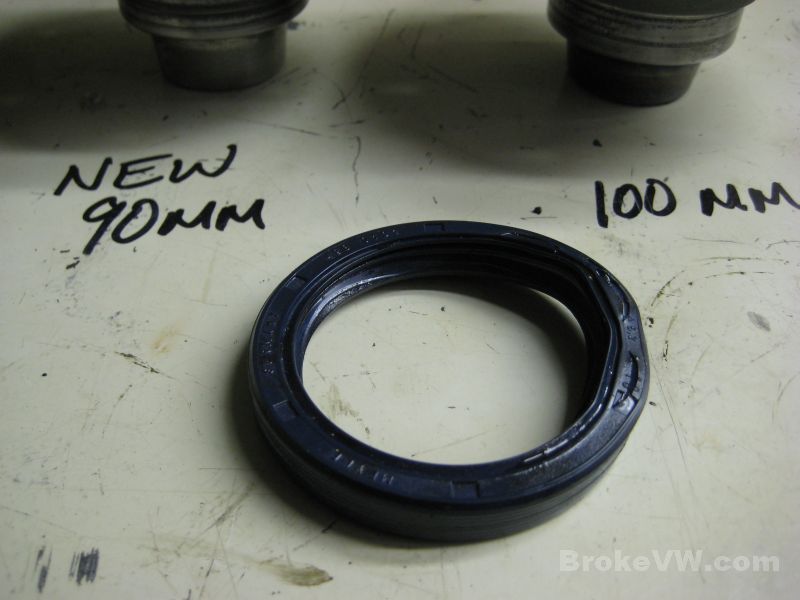
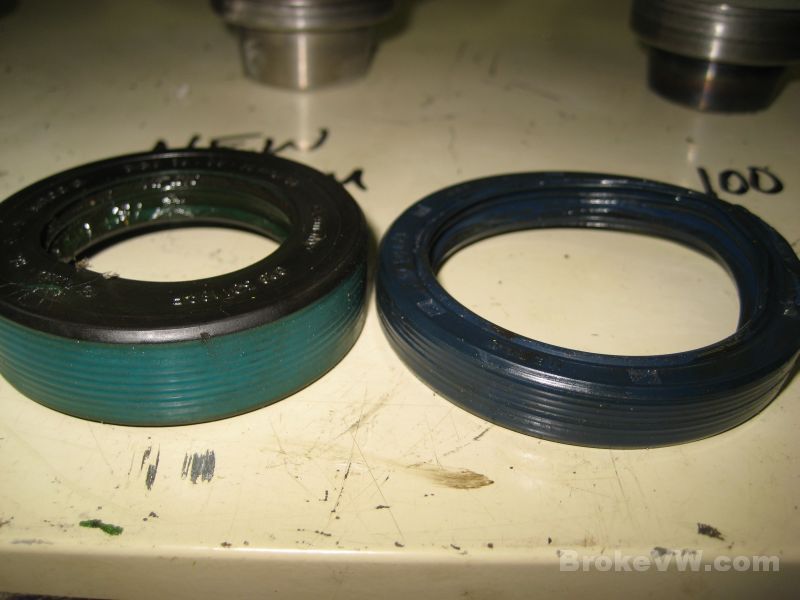
Most oil seals on the 020 will have their dimensions printed on them, in a standard format of inner diameter, then outer diameter, then depth or height.
This is the old "fat" seal which is 36mm ID, 58mm OD, and 15mm tall...
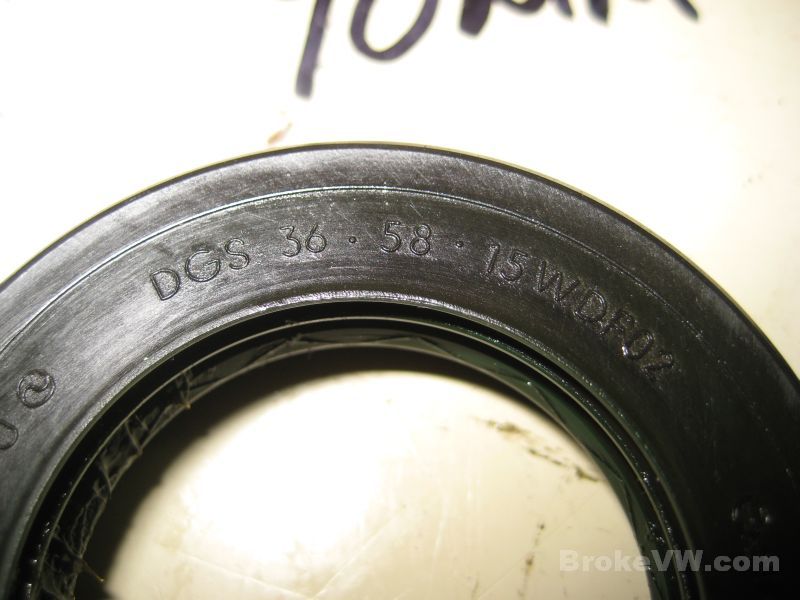
The new seals are bigger around, with a bigger hole, and are shorter at 50mm ID, 65mm OD, and 10mm tall.
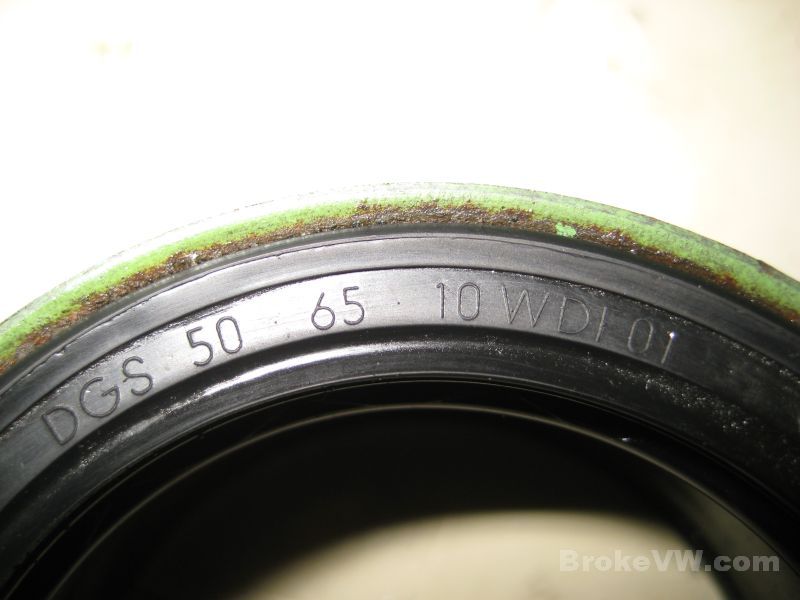
This pic shows where the seal rides on the old style 90mm flange...
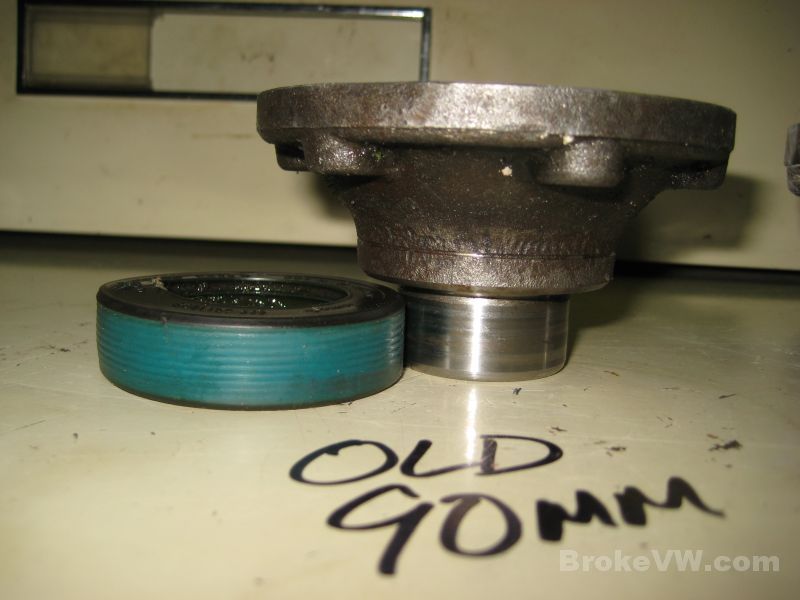
The new flange seals are a little different on the passenger side of the trans, they fit into a green seal sleeve. The bare seal on the left, then a seal installed into the sleeve on the right...
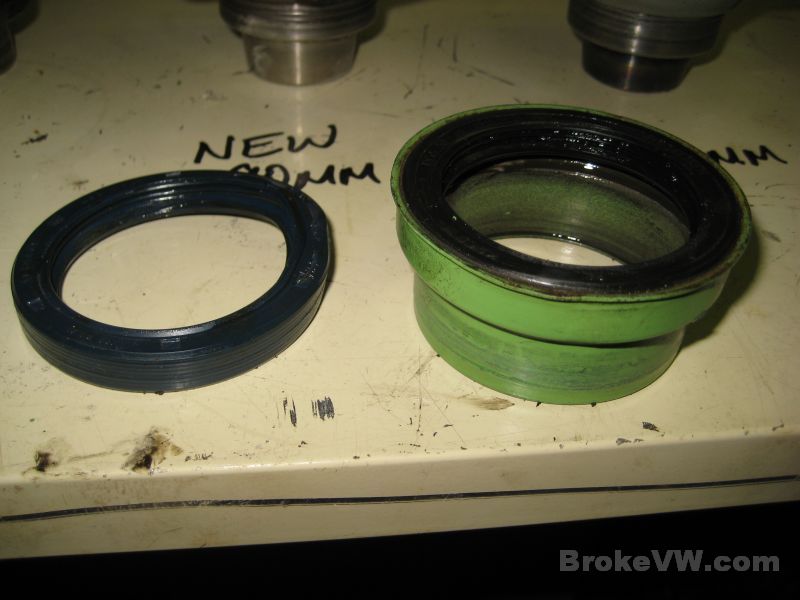
With the flange seal in the sleeve, you can see roughly where the seal rides on the flange when placed next to the new 90mm or 100mm flanges. The seal surface is the larger "shiny" portion of the flange, then the smaller shiny portion serves another purpose...
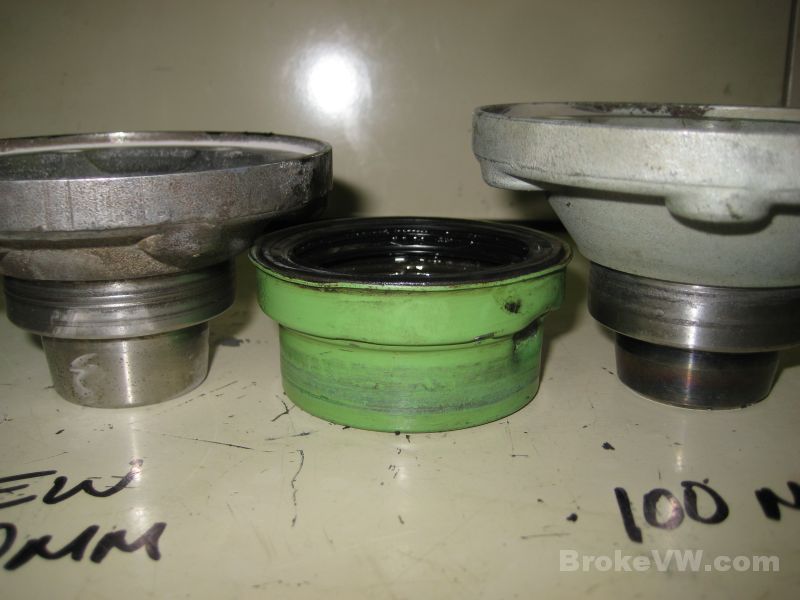
The smaller shiny portion of the new 90mm and 100mm flanges is there for the spring and cones VW added to the 020 in 1983 or so. This shows the spring and spring cap on the new 90mm flange...
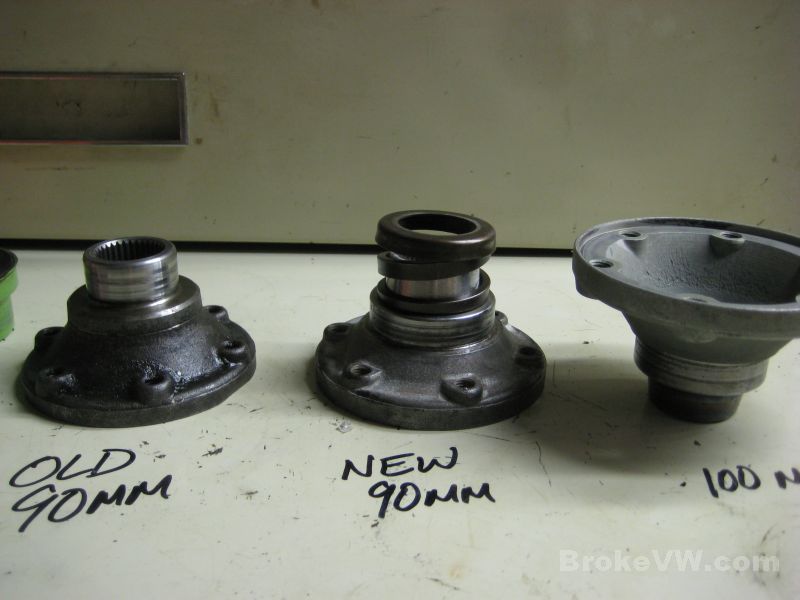
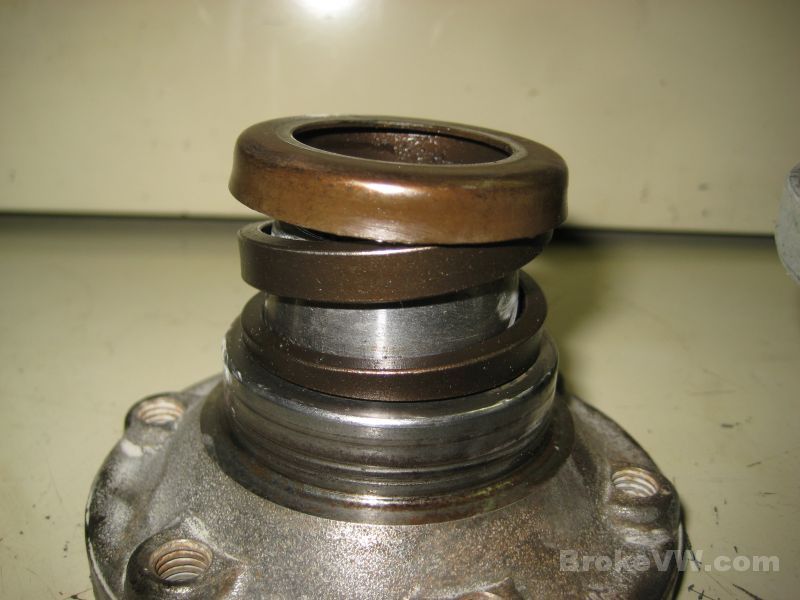
The spring cap will push against this bronze conical thrust ring, which then pinches closed on the stub axle. The bronze ring fits into the diff carrier... this is how the 40% and 80% kits increase preload, they press harder on that bronze ring. VW added the springs and cones (VW calls the bronze thrust rings cones) to stop the stub axles (shown in the middle of this pic) from rattling around and making noise...
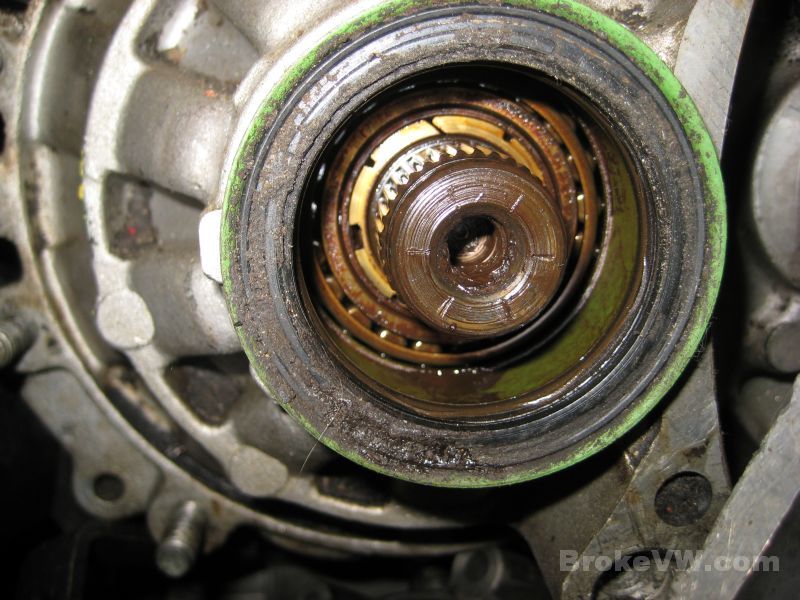
Here is the thing... in 1983, VW changed parts to stop complaints of stub axle rattling noise. To do this, they modified the flanges, added springs and cones, and modified the cast diff carrier inside the trans (to accept the cones). They changed the seal size, and they changed the casing... just the gearbox half of the casing. I don't know why exactly, but they left the bellhousing alone. I have guessed that it might be so the bellhousing can continue being used on various other models they manufacture around the planet that we might not get here in N. America.
On the gearbox half of the casing, they opened up the flange seal hole, from 58mm to 65mm (to fit the new seals).... on the bellhousing, they left the hole 58mm. They then produced the green seal sleeve which is an adapter to go from the 58mm hole to a 65mm hole. This is shown below...
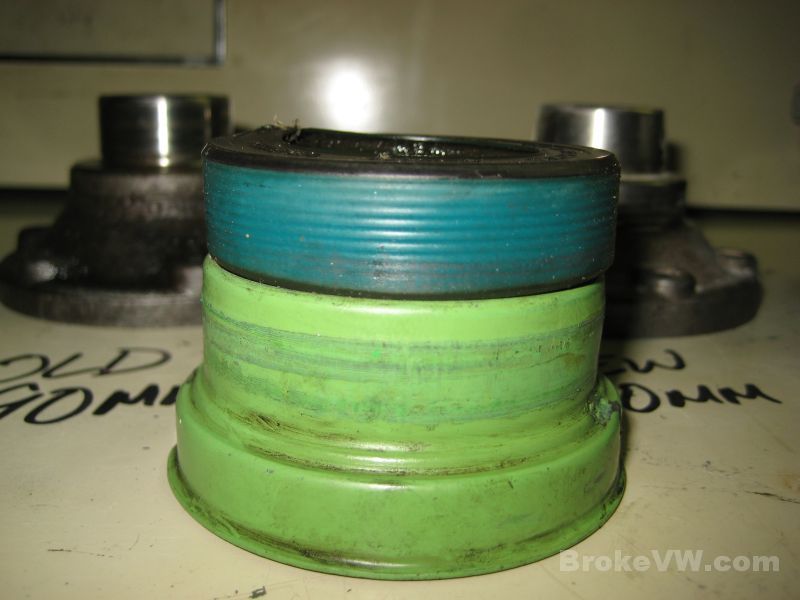
So, in 1983, they made the change, but they must have ran out of the old flanges and diff carriers BEFORE they ran out of the old case design... this means some trans left VW with the old casing, but new parts inside. To make the old case fit the new flanges and seals, they used a green sleeve on BOTH sides of the trans, just for a year or less, then they started using the new cases which require only the one green seal sleeve on the passenger side. This continued until the last 020 in the MK3 years.
This is an easy way to quickly ID what kind of flanges a
trans has... green seal sleeve behind the passenger flange? New style.
Green sleeve behind BOTH flanges? New style, transition-era trans from
1983/4 or so.
No green sleeve at all? Old style 90mm flanges.
This pic shows the old style seal, which is pressed into the casing, then the green sleeve, which is also pressed in. They sit like this when compared side by side...
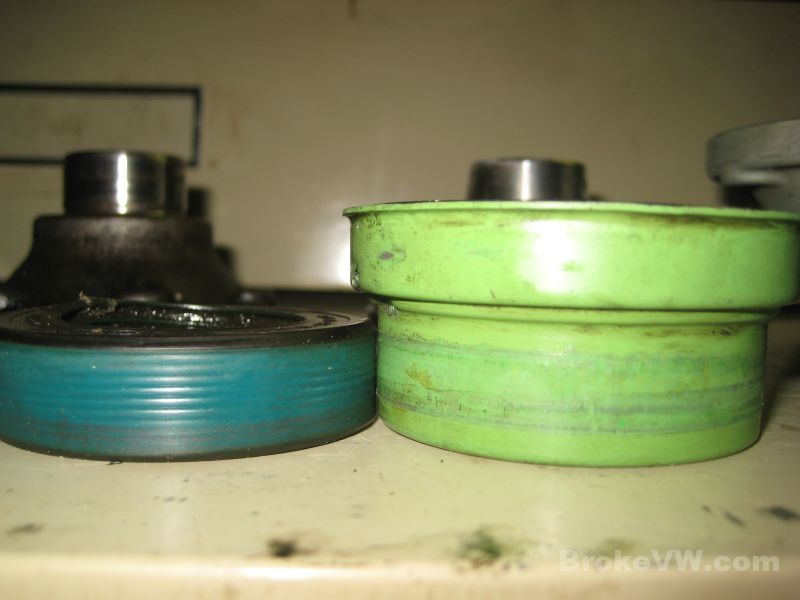
When you place an old 90mm flange and a new 90mm flange next to them, you can see that you can run new 90mm flanges in a pre-1983 trans that once used old 90mm flanges. You have to have TWO green sleeves, 2 flange seals, and obviously 2 new style 90mm flanges. Note the mounting surface of the CV is at the same height, so no axle changes needed to convert....
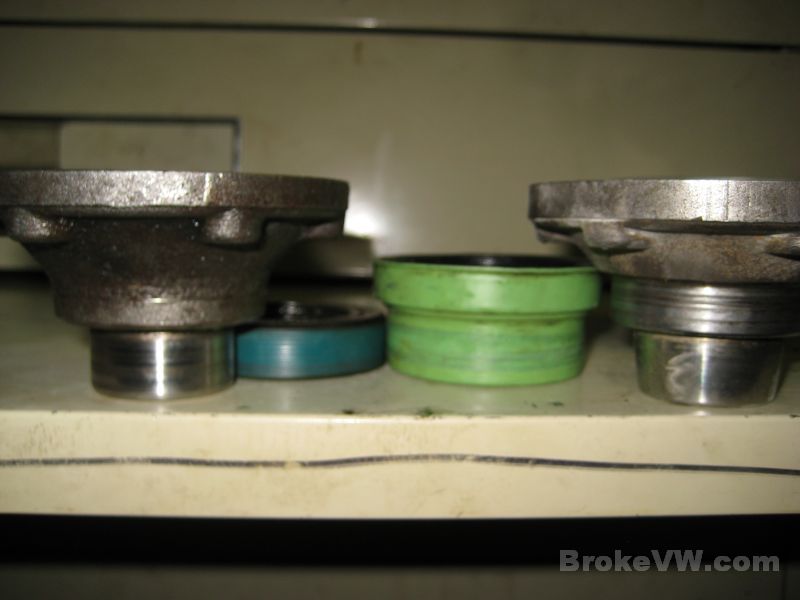
The conversion really won't accomplish anything without the other added parts, unless you simply want to convert an old trans to use 100mm inner CV's. Since 100mm use ONLY the new style seals, and those won't fit into an old casing, you need to do what VW did in 1983/4 and convert the case with 2 sleeves and the new parts.
If you want to carry the conversion further, you would need to add the springs and cones, and adding cones means changing the diff carrier inside. On the left, the old pre-1983 carrier, on the right the new style carrier. Notice the gap or space around the stub axle on the new style, and the solid carrier style on the left around the stub axle... this space is where the bronze conical thrust ring or cone will fit...
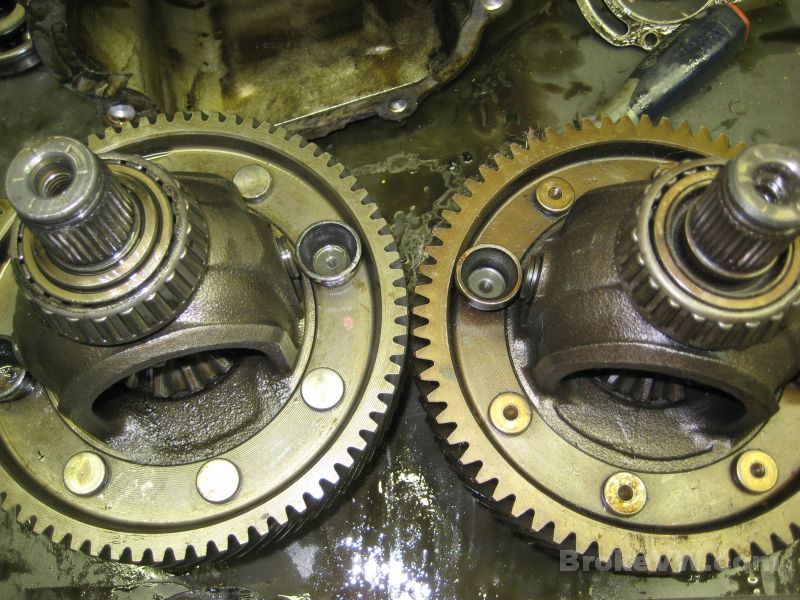
Here you see the bronze cone inserted into the new carrier...
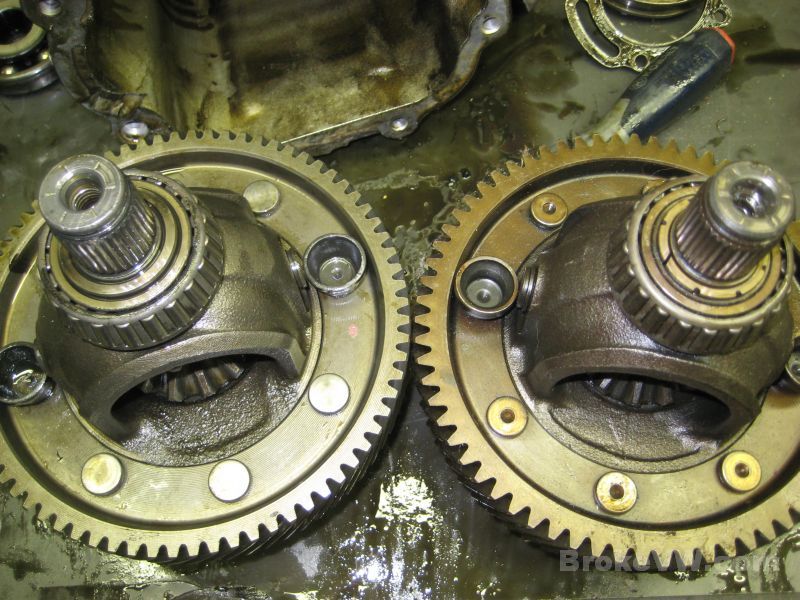
That's pretty much it on the flange types and what the differences are, but while taking the pics, I noticed something... the new 100mm is not the same height at the new 90mm. The 100mm is taller, which means it sticks out of the trans a little further on each side, which means the axles would have to be shorter, or they would have to telescope in and collapse a little to fit.
I checked EVERY flange I had in the shop (50+ loose I could easily grab) and all my 90mm are this height, and all my 100mm are this height.... so from a MK1 to a MK2, I can see there being longer axles, the MK3 has longer than the MK2 (due to control arm length changes).... but I was not aware there were 2 lengths of MK2 axles... obviously, the 90mm are longer to reach the shorter 90mm flange not sticking out of the trans as far.
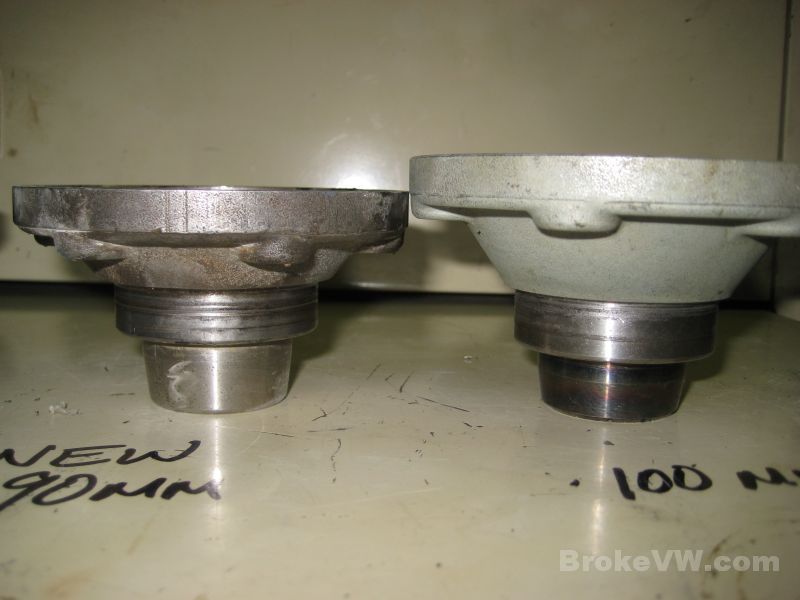
If you have any questions, feel free to email me!